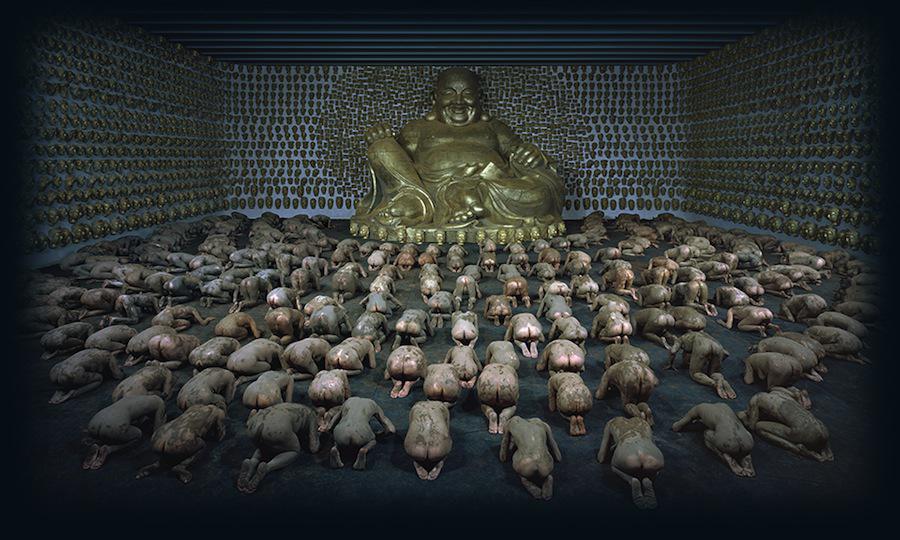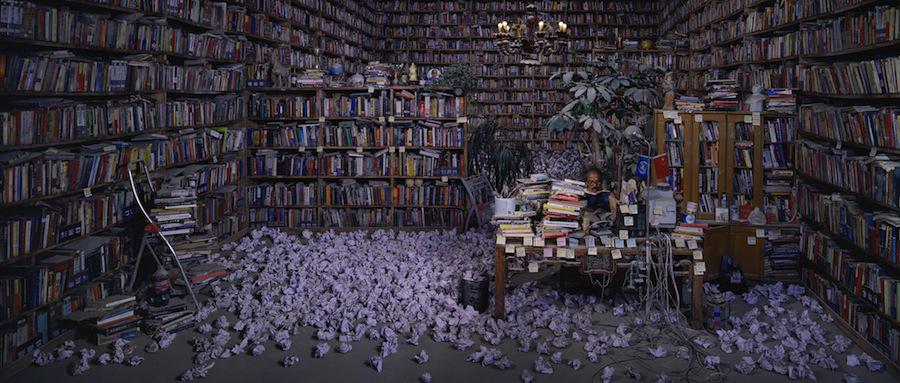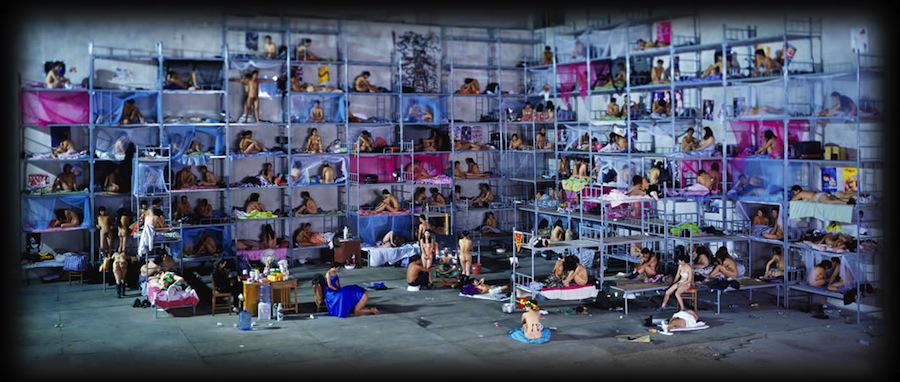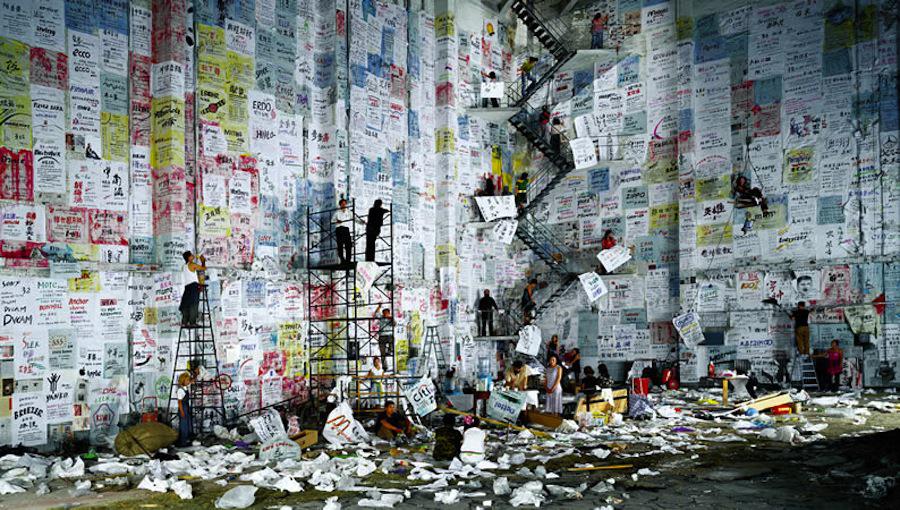Wang Qingsong challenges his country and the world with large-scale photographs that are theatrical, political, and humorous. They tackle a range of issues facing contemporary China, from education and international politics to religion and consumption.
“Most of my artworks discuss the ongoing stories in this dramatic society. I am like a photojournalist capturing the contradictions that we encounter in the transforming China,” Wang said via email.
Though the issues he addresses are often timely, the photographs have little in common with photos one might find in a newspaper’s coverage of daily events.
“Considering that the news he can see on TV or read in the newspapers are just a partial vision of the truth, he needs to construct his own reality, his own vision of a situation to show their different dimensions and facets,” said Jeremie Thircuir via email, whose publishing house, Thircuir Books, has released a monograph of Wang’s work.

Wang Qingsong

Wang Qingsong
Wang’s photographs are each massive undertakings. They require months of preparation, giant spaces, and sometimes hundreds of models to produce. Wang said all the shoots are done in a day, and since 2000 he hasn’t used any digital manipulation. The final, physical products are often massive themselves. A print of his 2010 photograph, The History of Monuments, for instance, measures nearly 138 feet across.
“You could of course go back to the tradition of [the] Chinese scroll, the idea of [a] piece bigger than what the mind can capture in one glance,” Thircuir said. “There is a spatial and temporal dimension in these works. By looking at them, the narrative develops. At the same time, he’s also using very Western classical structures of representation, and the overscaled photographs trends initiated by the likes of Gursky.”
But not everyone in China is a fan of his work. According to the New York Times, Wang has been questioned by police, and on at least one occasion, he was forced to turn over his negatives.
“Politically, I think he is surely one of the most critical artists in China,” Thircuir said.

Wang Qingsong

Wang Qingsong
But although many of his interests relate to China, Wang’s messages often transcend any one specific culture. In his most iconic photograph, Follow Me, Wang poses alone at a desk in front of a blackboard cluttered with hundreds of pieces of information from various disciplines in different languages.
According to Thircuir, Wang’s work has become darker over the years, a transition that can be seen in the differences between the kitsch and colorful approach to 2000’s Night Revels of Lao Li and the bleaker vision of 2011’s Goddess.
Wang has also produced video art, and moving forward, Thircuir said Wang has expressed interest in venturing into cinema. When he first became interested in video a few years ago, Thircuir said, Wang enrolled at the Beijing Film Academy to “get the basics.”
“I think this tells a lot about the man: his humility and simplicity, but also his determination and ability to start again from scratch, [despite] his current position in the art world,” Thircuir said.

Wang Qingsong

Wang Qingsong
